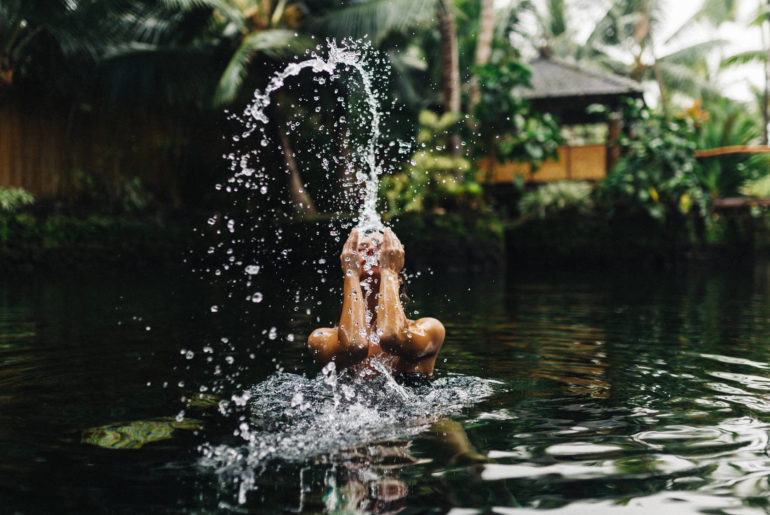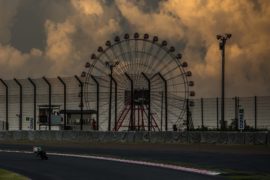After Laguna Seca, the future of World Superbike was once again questioned. Asking the right question may be more important than finding the right answer, though.
“I’ve said it before and I’ll say it again, democracy simply doesn’t work,” so said this intrepid reporter when faced with reports that Bart’s Comet would bring destruction to Springfield. It was a time of uncertainty and peril for America’s greatest city, but one from which it recovered by maintaining the status quo.
While the WorldSBK paddock isn’t standing on Mount Springfield singing Que Sera Sera, and waiting for the comet to hit, it is facing a moment of truth about where the series is heading.
It’s always easier to swim with the tide, but for WorldSBK patience and thoroughness are more important than being swift and decisive and making the wrong decision.
Since Imola, the WorldSBK paddock has been filled with rumor and counter rumor about the direction that the series will take. Will there be a spec-ECU, will there be concessions for different manufacturer, will there be testing restrictions placed on the successful teams?
The list of possibilities has been the talk of the paddock with Dorna’s Carmelo Ezpeleta even suggesting making the series into a Stock class, but what is actually best for WorldSBK?
Dominance by Kawasaki and Ducati is clearly an issue. Over the last three years, the series has been dominated by both manufacturers with only Nicky Hayden’s victory at Sepang last year blotting their copy book.
On track the rivalry between Jonathan Rea and Chaz Davies has been the main tussle but while theirs is as heated as any it hasn’t captured the imagination.
A lot of that has to do with the fact that, on a bad day at the office, both riders can still realistically expect to finish on the podium.
As a result the series has been devoid of drama at times. That is not the fault of either rider or Kawasaki and Ducati. The burden should fall on the rest of the grid to close the gap by raising more money and spending it in WorldSBK.
That Kawasaki does not have a MotoGP team is a convenient stick to beat them with. That they prioritize their budget on WorldSBK, and have been able to turn that into a hugely successful run of sustained success is to be lauded.
When Ducati dominated WorldSBK in the nineties, by winning 8 championships and 152 races, the Italian manufacturer was also solely involved in WorldSBK at the expense of MotoGP. That era of WorldSBK is regarded as the “golden era” of the series, but was it truly that different to the present?
During the last five years of Kawasaki and Ducati domination, they have claimed almost universal success. However, it is only since Aprilia withdrew from the series in 2014 that they have been the most successful teams on the grid.
In the past, the 2002 “classic season” being a perfect example, WorldSBK has been viewed through rose tinted glasses. That was a campaign that is always remembered for the last race, last lap, last corner scrap for the crown between Colin Edwards and Troy Bayliss.
It is rightly heralded as one of the closest title fights in history. But when Bayliss won 14 of the first 17 races there were calls for changes to be made. That Edwards ran the table and claimed the crown saved some blushes and changed the narrative was good fortune.
Unfortunately such fortune is in short supply at the moment, despite the WorldSBK grid being home to a multitude of world champions, national champions, and race-winners on the international stage.
In the past one of the key identities of WorldSBK was that local wildcards were able to race and win in the series. The biggest single obstacle to that is the rule book.
While the calls to bring WorldSBK back to a pure “production” basis that the series had in 1988, it makes sense that a change such as this would give WorldSBK a distinct identity from the prototypes of MotoGP. However, it is the teams, riders, and national identities that need to return to the fold.
In the true “golden era” of WorldSBK, locals were able to showcase their talent and make a name for themselves. Mick Doohan won three WorldSBK races in 1989 before jumping to fame, fortune, and legendary status in MotoGP, and history is littered with similar stories.
Whether it was the Japanese riders at Sugo-Makoto (Tamada won three times at the Japanese round before moving to MotoGP and winning races), or British riders at Brands Hatch and Donington Park (Shane Byrne and Neil Hodgson both won as local starters), or American riders thriving at Laguna Seca.
The history book of WorldSBK is pockmarked with underdog stories.
This year Leon Haslam wildcarded at his home round and stood on the podium. But last weekend at Laguna Seca the home crowd had no chance to see their local stars take on the best Superbike riders on the planet.
The prospect of seeing Toni Elias and Roger Lee Hayden line up on the grid on a factory Suzuki alongside the Graves Yamaha riders would have been mouthwatering but the current state of World Superbike makes this all but impossible.
With multiple control tire suppliers across the world, different electronic packages, and varying restrictions on machinery, it has become too costly for local teams to prepare what would amount to a one-off bike for their home round.
At Laguna Seca it would have been intriguing to see the WorldSBK grid have to take on the Americans. Would the locals win? Probably not, but it would be very interesting to see them try it once again.
The rule books will make it a challenge for teams to justify the costs of wild carding, but changes could make it even more difficult. If, for example, the much discussed spec-ECU is brought into WorldSBK, what happens to MotoAmerica?
The series adopted the world championship’s technical rulebook for this year, and would they immediately change to a spec-ECU? If so the costs could be huge for teams.
At the COTA round of MotoGP, Pat Alexander of Suzuki North America, told Asphalt & Rubber, “Going to the WorldSBK rules for this year is another part of MotoAmerica’s scheme.”
“In the past with the regulations being for lesser specification, people would see our guys’ times getting trounced by the WorldSBK,” he continued. “With that being the case, why would you watch it? If we can be closer to them, then I think that also adds to the flavor of our series.”
While the lap time argument may be moot, is it too much to expect fans to once again have to understand why there is potentially such vast differences between two Superbike classes? There will be politics at play when this decision is made, and none more so than with the British Superbike championship.
Over the course of the last ten years BSB has seen a surge in interest, and it is rightfully a very highly respected championship. However could the size of the Superbike pie be grown with a unified rule book?
These changes are all about making more money from WorldSBK, and the easiest way to do that is to grow the size of the market rather than cannibalize each other. A common ground needs to be found for the greater good of theses national series, the world championship, and the fans at home.
There is a fine line between making significant and necessary changes, and to throwing the baby out with the bath water. Reasoned thinking and clear heads are needed to find the best path forward for WorldSBK.
Many times making no decision is better than making the wrong one. Trying to garner positive headlines in the summer is not the answer for WorldSBK, but rather it will be taking decisive action when the correct solution is found.
Photos: © 2016 Jensen Beeler / Asphalt & Rubber – Creative Commons – Attribution 3.0
This World Superbike story is made possible by our A&R Pro members. If you like reading WorldSBK stories on Asphalt & Rubber, you should consider supporting this content by signing up for A&R Pro.




